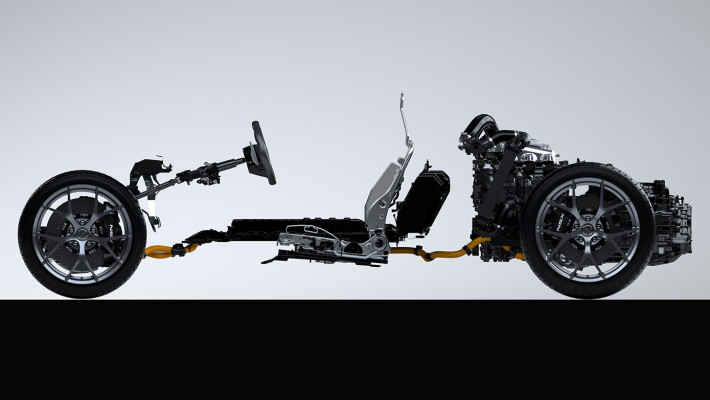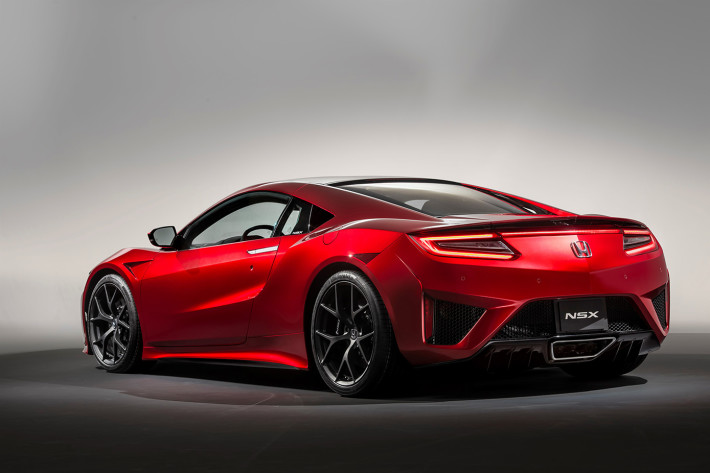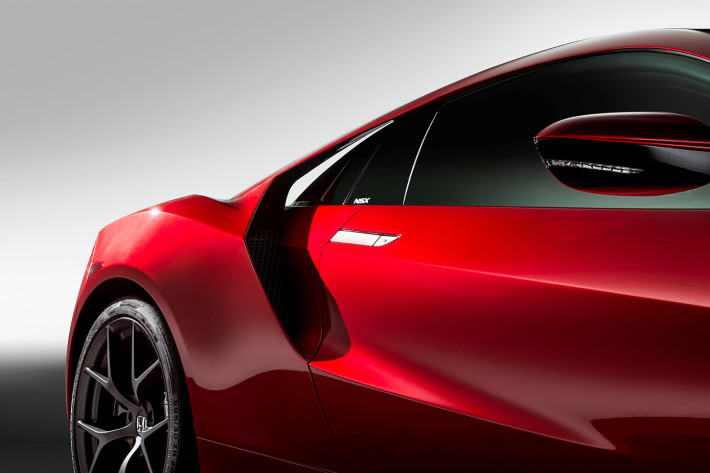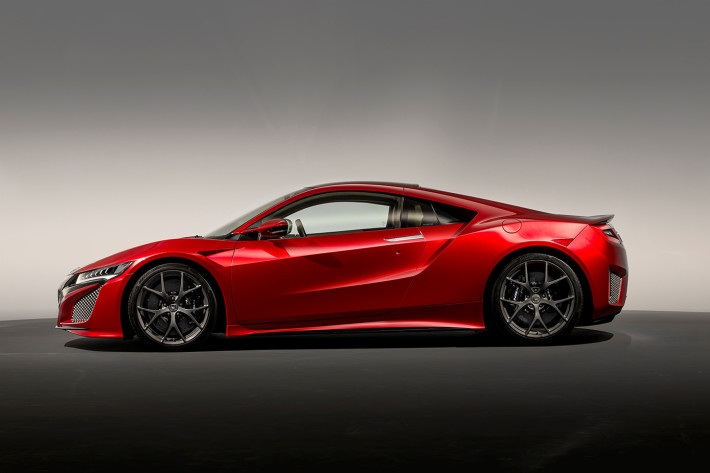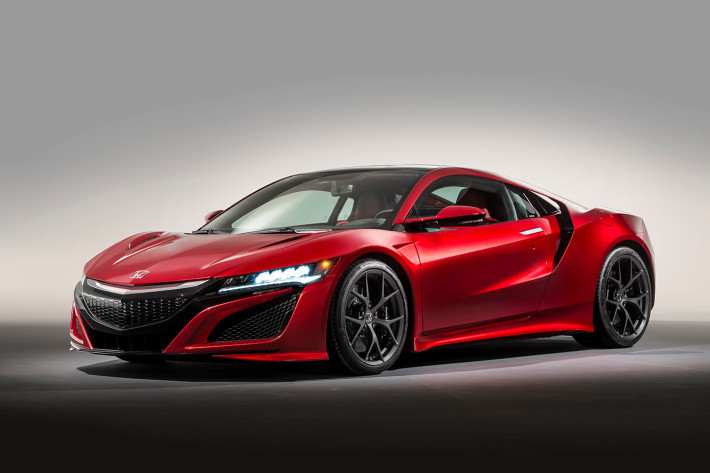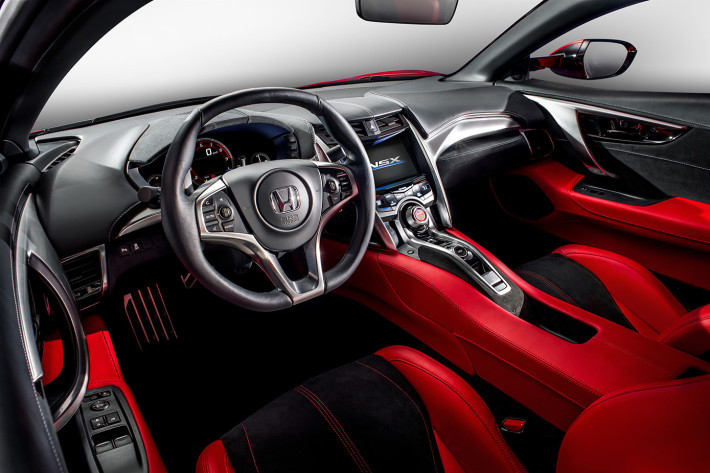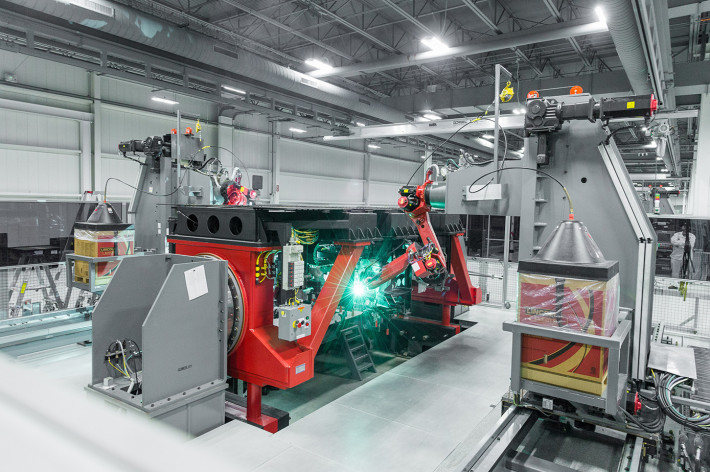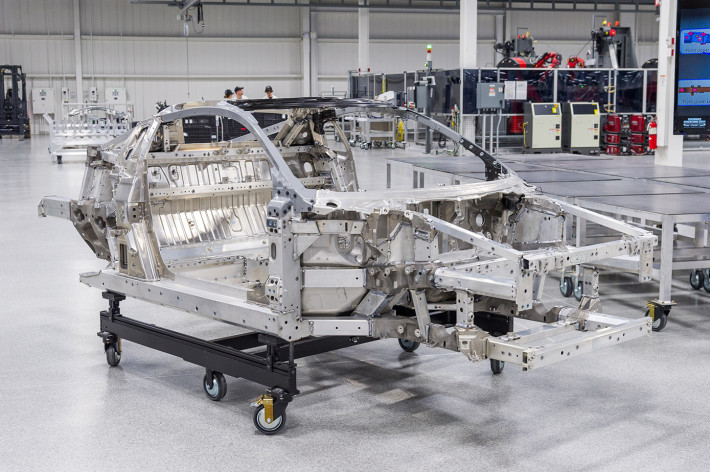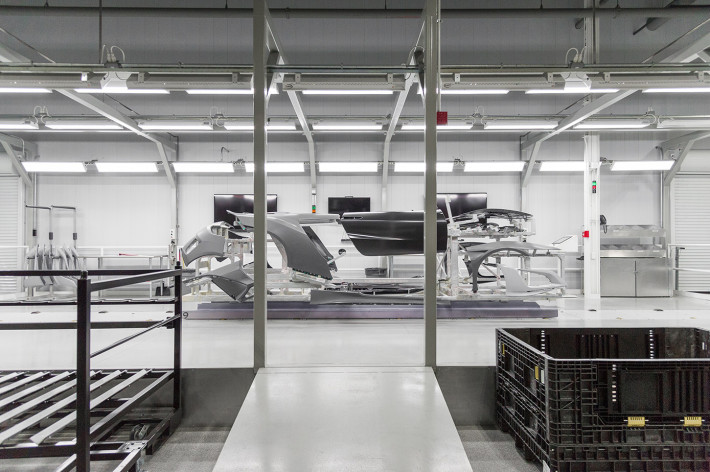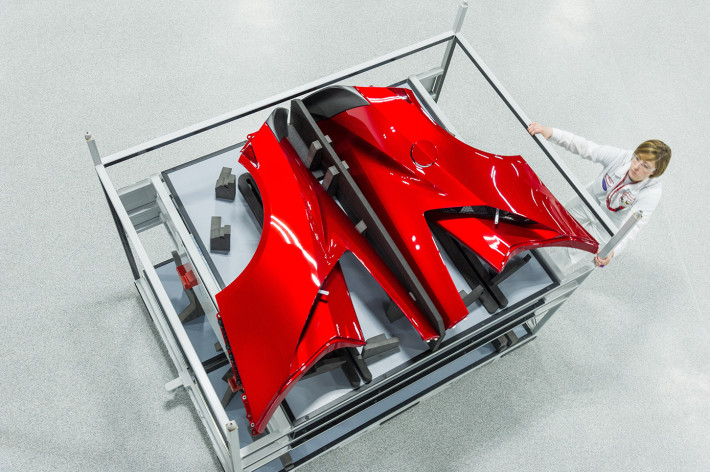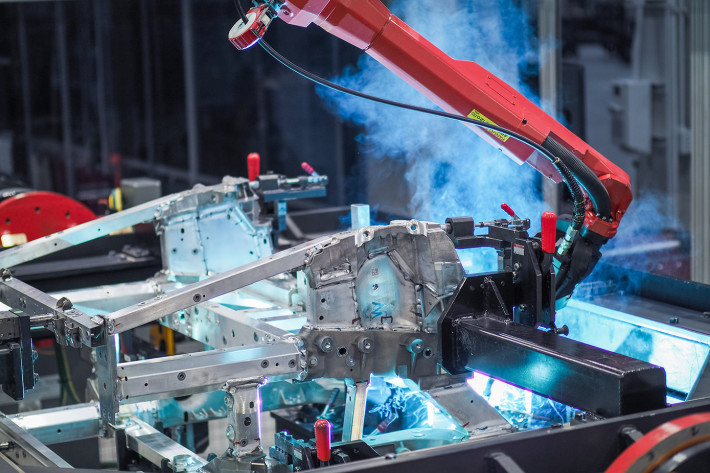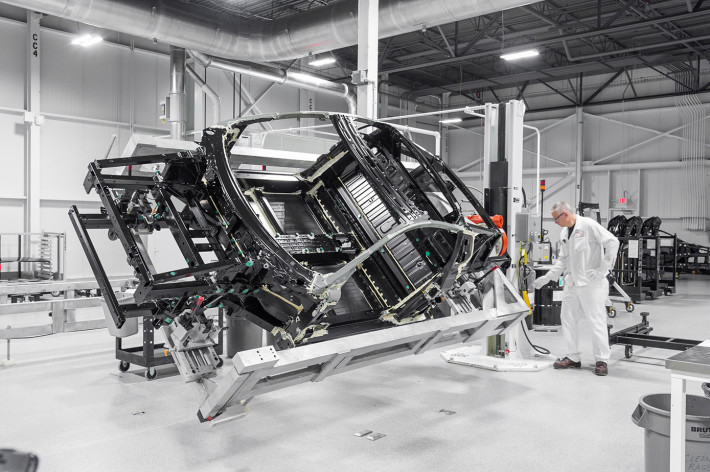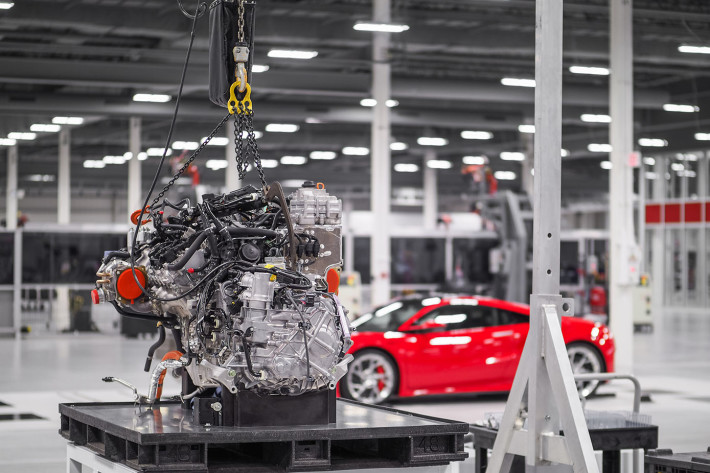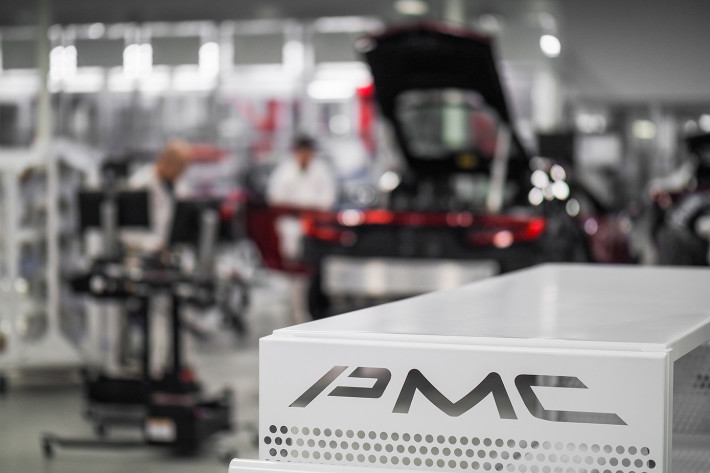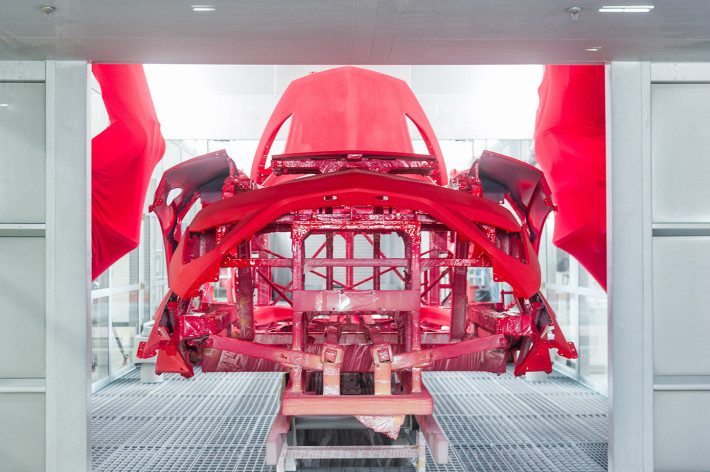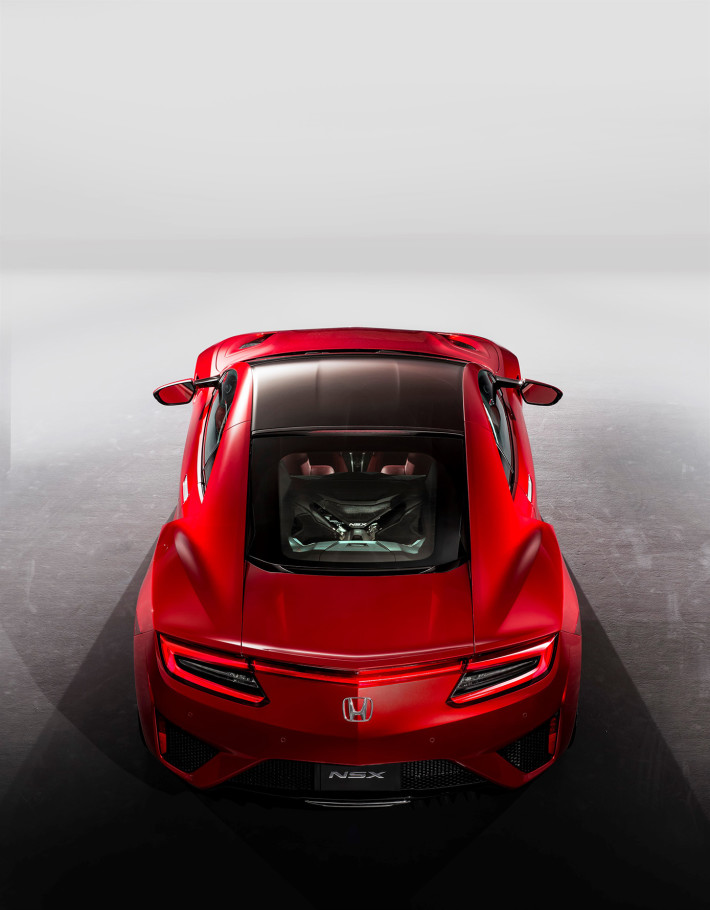16 May 2016
With the new NSX, Honda makes its return to the supercar sector, and does so with the declared ambition of uniting two fundamental elements of its history: its original identity as a manufacturer of sports cars and the application of cutting-edge technology. The link with its heritage is testified by the name, the same as the model tested by Ayrton Senna in the nineties on the Suzuka Circuit. But the set of hi-tech elements that characterize it is more sophisticated, starting with the powertrain. The NSX is a hybrid and therefore powered by a combination of gasoline engines and electric motors. Behind the driver’s back is set a V-6 twin turbo engine that alone produces 500 hp, but there are also 3 electric motors, one of them putting out 47 hp and coupled to the transmission, and two with an output of 37 hp located on the front axle, which also provide dynamic traction control (torque vectoring) when required during steering. It should be said that while the hybrid drive is not a complete novelty in the field of thoroughbred sports cars (the last few years have seen the arrival on the market of the Porsche 918, McLaren P1 and LaFerrari, using similar systems), the integration of the different technologies appears more complex here, if only for the presence of three electric power units. The chassis is very interesting too: an aluminum space frame produced at the company’s new Performance Manufacturing Center in Marysville, USA, by a technique known as ablation casting that allows the suspension to be attached directly to the supporting structure. An engineering solution that also has an effect on the handling, very easy despite the fact that the car weighs more than 1,700 kg. The transmission is dual-clutch automatic, the brakes are made by Brembo and the powertrain drives all four wheels. There are four drive modes that can be selected, Quiet, Sport, Sport+ and Track, the last of which is for use when putting the car to the ultimate test on the racing circuit. According to the performance data its top speed is over 300 km/h and it can accelerate from 0 to 100 km/h in less than 3 seconds. But quite apart from the figures, the care taken over the aerodynamics is evident, especially with regard to the clean flow of air along the concave and convex surfaces from the front to the rear wheels. The interior is functional, with clean lines, almost those of a concept car, and a three-spoke wheel with the digital dashboard clearly visible at the center of its upper section. In short, the new Honda NSX is an effective mix of modern and traditional elements, and perhaps is not revolutionary from the viewpoint of design, but certainly a winner from that of its mechanics.
